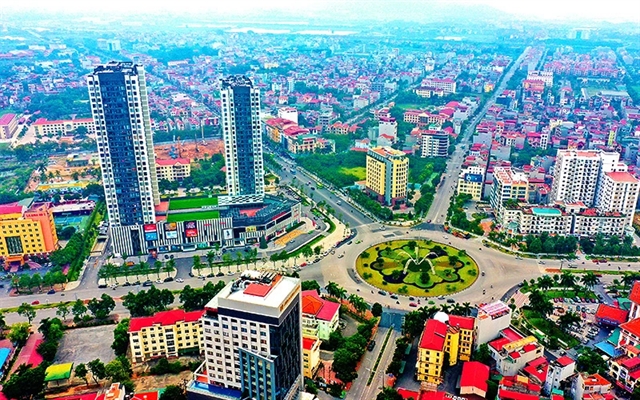 Society
Society

One of the breakthroughs for the development of Bắc Ninh Province to achieve its goal of becoming a centrally governed city by 2030 is the development of transportation infrastructure. This includes a focus on urban railways, underground transportation, and the introduction of two additional expressways into operation.

|
| Bắc Ninh city centre. The development goal by 2030 is for Bắc Ninh to become a centrally governed city, an economic and culturally vibrant centre in the northern region. Photo bacninh.gov.vn |
BẮC NINH -- The recently approved development plan for Bắc Ninh Province sets ambitious goals for the region, envisioning its transformation into a centrally governed city and a thriving economic and cultural hub in the northern region by 2030.
Positioned as a key development area in the Red River Delta, Bắc Ninh aims for synchronised and modern economic and social infrastructure, targeting an average annual GRDP growth rate of 8-9 per cent.
The plan outlines Bắc Ninh's vision to have four cities by 2030, including Bắc Ninh, Từ Sơn, Tiên Du, and Yên Phong; two towns, Quế Võ and Thuận Thành; and two districts, Lương Tài and Gia Bình.
Focusing on technical and social infrastructure, particularly in transportation, the plan aims to create green and smart urban areas, establish core digital infrastructure, upgrade industrial park facilities, and enhance commercial and e-commerce infrastructure.
Key strategies include attracting domestic and international corporations, transitioning industrial parks to sustainable practices, and building large logistics centres. The plan encourages investment through public-private partnerships, allocates land resources for transportation development, and emphasizes traffic safety and environmental protection.
Special projects include national highways, expressways, roads, inland waterways, airports, and aerodromes as outlined in approved national sector plans.
For roads, the plan targets the completion of four expressways by 2030, bringing the total length of expressways, national roads, and ring roads in the province to about 190 km. Currently, two expressways pass through the province, with expectations to add two new expressways: Ring Road No.4 and the Bắc Ninh - Phả Lại expressway.
In inland waterways, the plan outlines the development of three waterways managed by local authorities, focusing on suitable ports and inland water terminals.
The railway sector plans to upgrade the Hà Nội - Lạng Sơn railway line, construct the Hà Nội - Đồng Đăng railway line, and develop the eastern ring line of Hà Nội from Ngọc Hồi - Lạc Đạo - Bắc Hồng as a double track.
By 2025, the plan aims to upgrade existing bus stations and construct three new ones in Bắc Ninh City, Từ Sơn City, and Yên Phong District. By 2030, all existing passenger terminals will be upgraded, and four new terminals will be constructed.
The plan includes the potential development of an airport in Gia Bình District, envisioned to be upgraded to a level 3 heliport, level 3 military airport, and level 3C civilian airport by 2045, according to ICAO standards.
Additionally, Bắc Ninh plans four dry ports and the development of inland water terminals on the Đuống River, Cầu River, and Thái Bình River.
For the urban railway system, the plan explores the potential implementation of Light Rapid Transit (LRT) and envisions constructing twelve urban railway lines.
Extending its vision to underground transportation infrastructure, the plan foresees underground train stations in key urban areas and focuses on developing underground road tunnel infrastructure and parking facilities.
The comprehensive strategy aims to revolutionise and streamline Bắc Ninh's transportation networks, setting the stage for significant regional development. VNS




